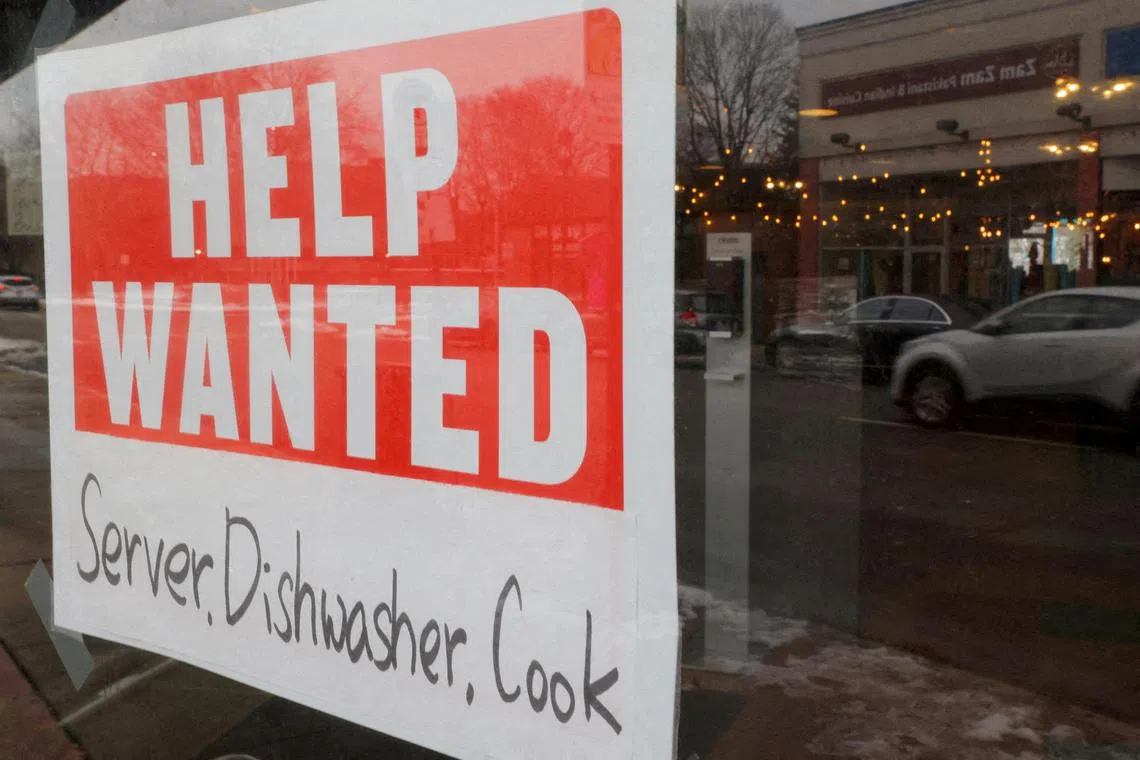US hiring significantly misses expectations as jobs market cools
Sign up now: Get ST's newsletters delivered to your inbox

US job growth came in at 22,000 in August, down from July’s 79,000 figure.
PHOTO: REUTERS
Follow topic:
WASHINGTON - The US economy added significantly fewer jobs than expected in August, government data showed on Sept 5, in a closely watched report after weak data earlier prompted President Donald Trump to fire a key economic official.
Overall, the figures confirm a slowdown in the labour market of the world’s biggest economy as businesses pull back on hiring while grappling with uncertainty sparked in large part by Mr Trump’s fast-changing tariffs.
US job growth came in at 22,000 in August, down from July’s 79,000 figure, said the Department of Labour. The jobless rate edged up from 4.2 per cent to 4.3 per cent, in line with analysts’ expectations.
Job growth in June, earlier estimated at 14,000, was revised to a 13,000 decline, the report said. Hiring in July was adjusted slightly upwards.
US employment numbers are usually a key data point that analysts monitor, as these usually have some bearing on how the US Federal Reserve adjusts interest rates.
Sept 5’s numbers are under particular scrutiny after a poor showing in July’s data – released in August – prompted Mr Trump to claim the figures were “rigged” and fire the commissioner of labour statistics. US job growth missed expectations at the time, too, while revisions to hiring figures in recent months brought them to the weakest levels since the Covid-19 pandemic.
In firing commissioner Erika McEntarfer in August, Mr Trump charged that she had “faked” jobs data to boost Democrats’ chances of victory in the last presidential election.
He also pointed to the downward revisions to hiring numbers, saying that similar things have happened in 2025 – after his return to the presidency in January – and “always to the negative”.
But Nationwide chief economist Kathy Bostjancic told AFP that data revisions take place as survey response rates have declined.
If companies respond late, numbers have to be updated to reflect incoming data.
“I’ve never viewed the data as being politically determined or influenced,” she said. She conceded that “there’s room for improvement in data collection”.
‘Fragile balance’
EY chief economist Gregory Daco had anticipated that Sept 5’s report would “confirm that a marked slowdown in labour market conditions is under way”.
This comes as business leaders “continue to restrain hiring” as they grapple with softer demand, higher costs and interest rates, he wrote in a note.
Mr Trump’s stop-start approach to rolling out tariffs has snarled supply chains and made it tough for businesses to plan their next moves. Many firms said they have been forced to put growth plans on hold.
A Briefing.com consensus forecast expected US hiring at 78,000 in August.
But the cooldown in hiring has been notable in 2025, with KPMG senior economist Kenneth Kim earlier telling AFP that “last year, the average payroll gain per month was 168,000”.
“Recent data highlights a fragile balance in the labour market: labour demand and supply have become subdued, while layoffs remain limited,” Mr Daco said.
He warned that the labour force participation rate will likely edge down as stricter immigration policies under the Trump administration increasingly constrain worker flows in the coming months.
Rate cut incoming?
With a cooler labour market, analysts expect the Fed might be inclined to cut rates at the end of its policy meeting from Sept 16 to 17.
Since its last cut in December, the US central bank has held interest rates steady at a range between 4.25 per cent and 4.5 per cent.
In doing so, Fed policymakers have been balancing between risks of inflation and a deteriorating jobs market.
Economists have warned that Mr Trump’s wide-ranging tariffs on imports could fuel inflation and bog down economic growth over the long run.
The Fed is monitoring the duties’ effects on consumer prices as officials mull over the right timing for their next rate cut, despite Mr Trump’s growing calls for swift and significant reductions.
However, a jobs report signalling a tepid labour market would likely support the need for a cut to boost the economy. AFP

